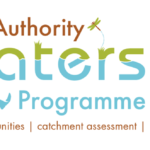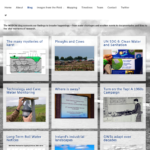We all live in water catchments and depend on water…
IFA Smart Farming: Sources and Solutions – the link between our soils & water quality, and how to use the PIP maps on catchments.ie
The 2021 IFA Smart Farming event Sources and Solutions, the link between our Soils and Water Quality has launched a series of short information videos on soil fertility, soil carbon sequestration and improving water quality, with two videos showing how the maps on catchments.ie can help.
How farmers manage their land can have a significant impact on water quality. Routine farming activities such as fertiliser and slurry application can lead to the loss of nutrients to our rivers and streams.
As different nutrients behave differently in soil types knowing how to maximise nutrient use efficiency and minimise losses is key to reducing input costs, protecting our water quality, and reducing emissions on farms.
Five short information videos have been developed by Smart Farming to help farmers to improve their soil fertility, soil carbon sequestration and water quality. The aim of the information videos is to convey practical advice to farmers which are easy to implement on their farms.
The IFA Smart Farming programme is supported by the EPA.
How to improve water quality?
ASSAP Advisor Meabh O’Hagan visits a drystock farm in Co. Meath and identifies the 5 key measures to help protect water quality on farms:
- Apply manure, slurry and fertiliser correctly.
- 2.Introduce an extended buffer zone.
- 3.Locate water troughs away from waterways.
- 4.Implement a nutrient management plan.
- 5.Introduce mixed species & clover to your grass swards.
What are Pollution Impact Potential (PIP) Maps?
ASSAP Advisor Meabh O’Hagan explains what the EPA Pollution Impact Potential maps are used for and how they can be used by farmers to identify water pressures in their area.
How to use the PIP maps on catchments.ie
Jenny Deakin, Manager of the Catchment Science and Management Unit in the EPA gives a step-by-step tutorial on how to access the PIP maps online, search for your location and identify pressure points on water quality.
These maps, including flow paths and delivery points, do not indicate specific areas that have a problem, and they are not designed or suitable to be used on their own as a basis for decisions at field scale. They can be used however to target measures in catchments where water monitoring data have indicated that there is a problem.
Learn more:
SmartFarming | Sources and Solutions – Link Between Our Soils & Water Quality
Next generation Pollution Impact Potential maps launched – Catchments.ie – Catchments.ie







